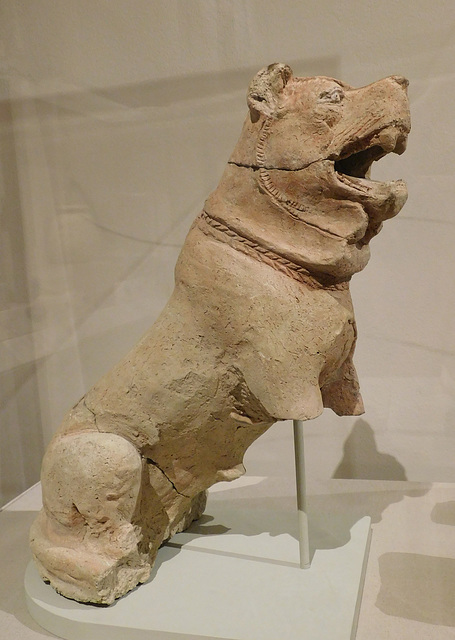Kassite Mastiff in the Metropolitan Museum of Art,…
Kassite Mastiff in the Metropolitan Museum of Art,…
Kassite Mastiff in the Metropolitan Museum of Art,…
Kassite Mastiff in the Metropolitan Museum of Art,…
Kassite Mastiff in the Metropolitan Museum of Art,…
Stele of Ushumgal in the Metropolitan Museum of Ar…
Stele of Ushumgal in the Metropolitan Museum of Ar…
Stele of Ushumgal in the Metropolitan Museum of Ar…
Stele of Ushumgal in the Metropolitan Museum of Ar…
Stele of Ushumgal in the Metropolitan Museum of Ar…
Stele of Ushumgal in the Metropolitan Museum of Ar…
Stele of Ushumgal in the Metropolitan Museum of Ar…
Stele of Ushumgal in the Metropolitan Museum of Ar…
Terracotta Nolan Amphora Attributed to the Painter…
Detail of a Terracotta Nolan Amphora Attributed to…
Detail of a Terracotta Nolan Amphora Attributed to…
Terracotta Lekythos Attributed to the Amasis Paint…
Terracotta Lekythos Attributed to the Amasis Paint…
Terracotta Lekythos Attributed to the Amasis Paint…
Detail of a Terracotta Lekythos Attributed to the…
Detail of a Terracotta Lekythos Attributed to the…
Detail of a Terracotta Lekythos Attributed to the…
Detail of a Terracotta Lekythos Attributed to the…
Kassite Mastiff in the Metropolitan Museum of Art,…
Kassite Mastiff in the Metropolitan Museum of Art,…
Portrait of a Young Man by Bronzino in the Metropo…
Portrait of a Young Man by Bronzino in the Metropo…
The Agony in Garden by Raphael in the Metropolitan…
The Agony in Garden by Raphael in the Metropolitan…
Men and Machine by Stuart Davis in the Metropolita…
Men and Machine by Stuart Davis in the Metropolita…
A Maid Asleep by Vermeer in the Metropolitan Museu…
A Maid Asleep by Vermeer in the Metropolitan Museu…
Detail of Diana and Actaeon by Corot in the Metrop…
Diana and Actaeon by Corot in the Metropolitan Mus…
Detail of The Source by Courbet in the Metropolita…
The Source by Courbet in the Metropolitan Museum o…
The Source by Courbet in the Metropolitan Museum o…
Detail of Number 28, 1950 by Jackson Pollock in th…
Detail of Number 28, 1950 by Jackson Pollock in th…
Detail of Number 28, 1950 by Jackson Pollock in th…
Detail of Number 28, 1950 by Jackson Pollock in th…
Number 28, 1950 by Jackson Pollock in the Metropol…
Number 28, 1950 by Jackson Pollock in the Metropol…
Easter Monday by DeKooning in the Metropolitan Mus…
See also...
Keywords
Authorizations, license
-
Visible by: Everyone -
All rights reserved
-
100 visits
Kassite Mastiff in the Metropolitan Museum of Art, August 2019


Mastiff
ca. mid-2nd millennium B.C.
Object Details
Period: Kassite
Date: ca. mid-2nd millennium B.C.
Geography: Mesopotamia
Culture: Kassite
Medium: Ceramic, paint
Dimensions: 16.3 x 14.17 in. (41.4 x 35.99 cm)
Classification: Ceramics-Sculpture
Credit Line: Purchase, The Charles Engelhard Foundation Gift, 1989
Accession Number: 1989.233
Dogs were regularly represented in the arts of Mesopotamia from earliest times, and were particularly popular in the later second millennium B.C. in central Babylonia. This clay mastiff is hollow on the inside. It retains traces of polychromy on its body, and remains of inlay in its eyes. The animal’s forehead wrinkles, snout, teeth, and muscular shoulders are carefully depicted. A braided collar circles the dog’s neck, and its tail is shown folded around its right hind leg. There is a hole at the top of its head, which may have held a standard in antiquity, perhaps similar to that shown in a contemporary seal carving in the Metropolitan's collection (1985.357.44).
In the ancient Near East, dogs were often associated with Gula, the goddess of healing. This dog is depicted in a watchful pose – seated, with an open mouth and forward-facing ears, now partially broken – and may have been set up as a guardian figure as well as a standard-bearer. Kassite artists were particularly skilled in sculpting clay, creating both sculptures and three dimensional brick compositions.
Text from: www.metmuseum.org/art/collection/search/327389
ca. mid-2nd millennium B.C.
Object Details
Period: Kassite
Date: ca. mid-2nd millennium B.C.
Geography: Mesopotamia
Culture: Kassite
Medium: Ceramic, paint
Dimensions: 16.3 x 14.17 in. (41.4 x 35.99 cm)
Classification: Ceramics-Sculpture
Credit Line: Purchase, The Charles Engelhard Foundation Gift, 1989
Accession Number: 1989.233
Dogs were regularly represented in the arts of Mesopotamia from earliest times, and were particularly popular in the later second millennium B.C. in central Babylonia. This clay mastiff is hollow on the inside. It retains traces of polychromy on its body, and remains of inlay in its eyes. The animal’s forehead wrinkles, snout, teeth, and muscular shoulders are carefully depicted. A braided collar circles the dog’s neck, and its tail is shown folded around its right hind leg. There is a hole at the top of its head, which may have held a standard in antiquity, perhaps similar to that shown in a contemporary seal carving in the Metropolitan's collection (1985.357.44).
In the ancient Near East, dogs were often associated with Gula, the goddess of healing. This dog is depicted in a watchful pose – seated, with an open mouth and forward-facing ears, now partially broken – and may have been set up as a guardian figure as well as a standard-bearer. Kassite artists were particularly skilled in sculpting clay, creating both sculptures and three dimensional brick compositions.
Text from: www.metmuseum.org/art/collection/search/327389
- Keyboard shortcuts:
Jump to top
RSS feed- Latest comments - Subscribe to the comment feeds of this photo
- ipernity © 2007-2024
- Help & Contact
|
Club news
|
About ipernity
|
History |
ipernity Club & Prices |
Guide of good conduct
Donate | Group guidelines | Privacy policy | Terms of use | Statutes | In memoria -
Facebook
Twitter

Sign-in to write a comment.